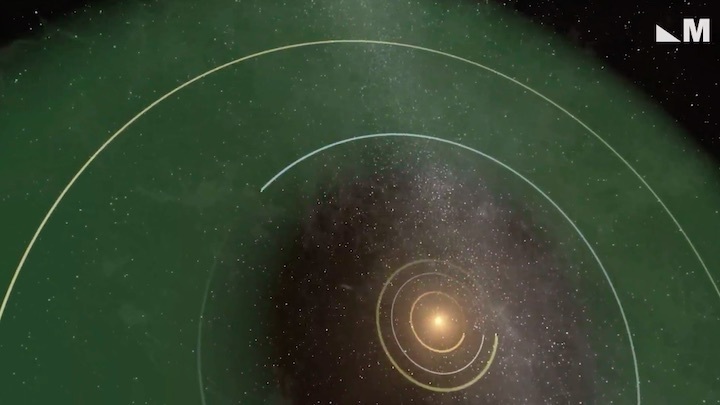12.01.2019

With help from a dead spacecraft, citizen scientists just discovered an alien world that professional astronomers had overlooked.
The newfound exoplanet orbits a small red star 226 light-years away from Earth in the constellation Taurus. Roughly twice as big as Earth, K2-288Bb circles its host star in the so-called habitable zone, where liquid water and possibly life could exist.
The discovery, described in a paper to be published in The Astronomical Journal, brings the total number of confirmed exoplanets to 3,869, including more than 40 with conditions that might be capable of sustaining life.
Scientists are excited about K2-288Bb not only because of the possibility that it could support life, but also because it’s unlike anything in our solar system: a solitary, midsize planet circling a star that has a nearby stellar companion.
“It will tell us something about the planetary formation process,” University of Chicago astronomer Adina Feinstein, the paper's lead author, told NBC News MACH in an email.
The observations that led to the discovery were made in early 2015 by NASA’s Kepler space telescope, which stopped operating last October when it ran out of propellant. But the data about the observations lay buried in a vast trove of Kepler data. As a result, the exoplanet went undetected.
“We, the science team, initially missed this signal,” Feinstein said in the email. “It took the eyes and excitement of the citizen scientists to draw our attention to this new planet."
The breakthrough came in 2016, when members of a volunteer organization called Exoplanet Explorers took a close look at the archived Kepler observations, including some that mission scientists had deemed worthless because they were collected while the telescope was settling into a new position.
“Citizen scientists are very complete — very good at finding every little blip in the data,” Jessie Christiansen, an astronomer at Caltech and a co-founder of Exoplanet Explorers, said in an email.
The volunteers noticed that the discarded observations contained important information: Light coming from the red star dimmed three times in a regular pattern, indicating that a planet in orbit around it was blocking some of the starlight.
Astronomers often use this phenomenon, known formally as an astronomical transit, as a means of detecting exoplanets, which are too small and too far away to be observed directly.
Once the volunteers had flagged K2-288Bb as a likely planet, the Kepler team scrutinized its host star closely to make sure there were no other nearby stars or sudden flares that might have confused the detection. Two years of follow-up observations with ground-based and space telescopes proved that K2-288Bb is real.
K2-288Bb isn’t the first noteworthy discovery made by Exoplanet Explorers, which currently has almost 22,000 members. Last year the group found K2-138, an intriguing set of five planets packed tightly together around an orange star in the constellation Aquarius some 180 light-years from Earth. And experts anticipate many more big discoveries from Exoplanet Explorers and other citizen-science groups.
“These projects are amazing because they’re authentic,” said Chris Lintott, an astrophysicist at Oxford University in England and principal investigator of Zooniverse, the parent organization of Exoplanet Explorers. “If you go to the website and spend just a few minutes, you can tell us something about the universe we didn't know before.”
Christopher Tanner, one of the citizen scientists who found K2-288Bb, expressed the experience more personally. “I’ve always been fascinated by the quest for distant worlds and distant life," he said in an email. "Exoplanet Explorers gives me the opportunity to be a part of it. That feels great."
Quelle: NBC
